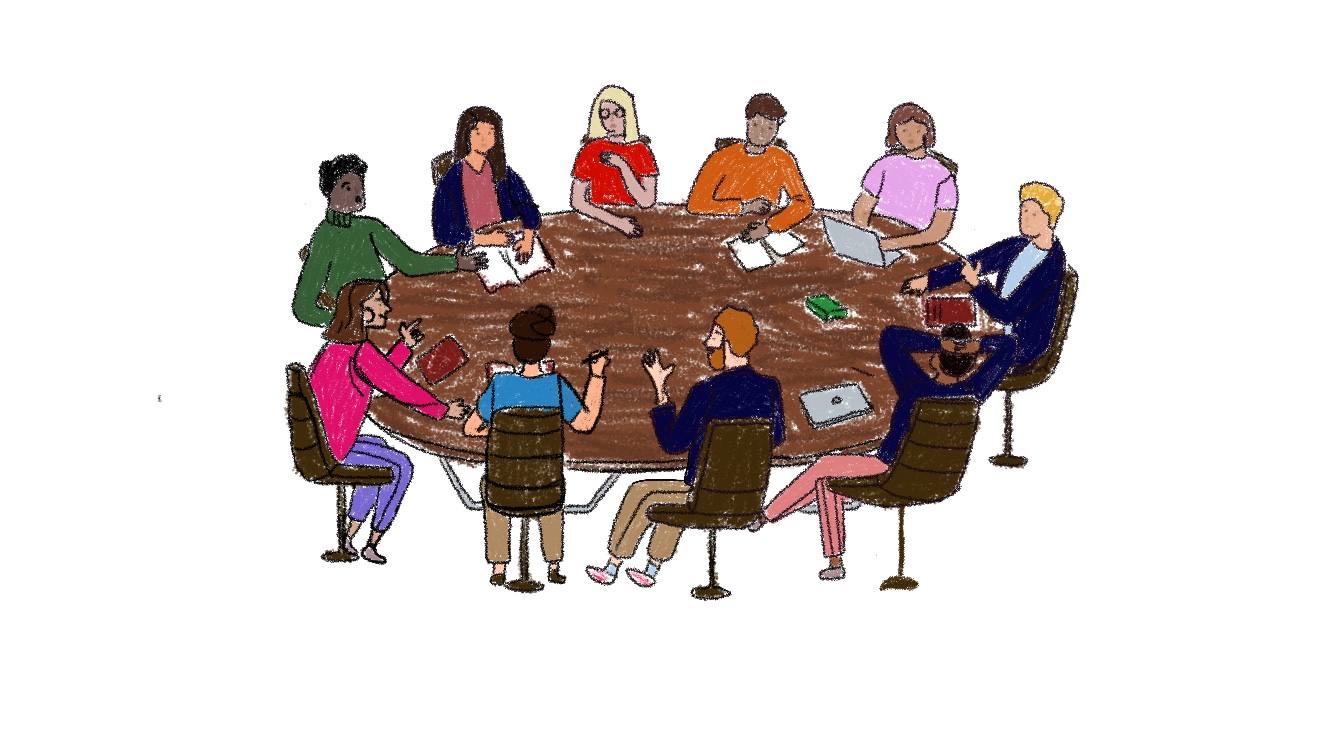According to Deerfield’s website, the school aims to “develop an inquisitive and curious mind” and “pursuit of mastery.” A crucial aspect in achieving these goals is “personal responsibility,” or the idea that students have agency over their own learning. So, how do Deerfield classrooms reflect these goals?
In many humanities classes, students are offered opportunities for self-driven learning in the form of class discussions, a hallmark of a Deerfield liberal arts education. Jerry Zhou ’22 said his ideal discussion is “student-led, with no teacher interference [because] for students to interact with the material firsthand [is] meaningful.” Elena Lu ’22 agreed, saying discussions encourage an “active role in learning” and push students to “come up with their own ideas.”
English Teacher Andy Stallings emphasizes the role of students as teachers in the classroom by splitting class time between Harkness discussions and composition workshops where students can practice and refine their writing skills. He said that exploring topics of personal interest is integral to self-motivated learning, claiming, “The more that I keep my concerns about a text out of the way, the more the students learn for themselves and ask questions that they care about.”
Summer Zhou ’23 said that “for STEM classes, it might help to lecture more,” reflecting a broader viewpoint that discussion and projects may not be suitable for subjects like math and science that emphasize delivering tangible information and skills. Even with humanities classes, History and Social Science Teacher Tricia Batchelor said, “Often we’re trying to touch on a wide range of things and students can’t always engage with all that material independently.” Language Teacher Daniel Houston said that, unlike upper-level Latin classes and Greek electives, lower-level classes need to use more lectures and teacher-led discussions that enable “efficient information exchange.”

Even within STEM and content-centric classes, however, teachers have found ways to incorporate student initiative. Science and Computer Science Teacher Ben Bakker, for instance, said that “people learn to program by programming,” making his role simply “finding a set of google problems to solve, then I become more of a coach or teaching assistant to guide them, correct them, and offer them feedback.”
Similarly, Math Teacher Darnel Barnes operates a style of problem-based learning where lecture time is limited to twenty minutes at the start of class. He celebrates the effectiveness of collaborative whiteboard work, and of students explaining concepts to each other. “Students bring [valuable] things to the table,” Mr. Barnes said. “[I] ultimately want to give up control and facilitate learning.” Some students agree on the effectiveness of student-driven learning; Will Stultz ’22 shared that “group work, labs, and hands-on activities” helped him learn effectively.
According to Ms. Batchelor, there may also be value to varying teaching formats, rather than adhering to a single principle. She said, “varying what we do in class and how we approach class enables different students to feel confident at different points in time, [and] creates opportunities to re-engage if they’re getting a little lost.” Her Honors European History class features full-class Harkness discussions or simulations, small group activities, primary source interpretations, and “interactive lectures.” All these approaches aim to complement each other for a holistic course.
Blair Huang ’22 said that her American Studies class used a variety of creative products like movies or podcasts, and analyzed literature and artistic works in addition to historical events. She said, “Exploring a subject through different mediums makes you more engaged and want to be passionate.”
In addition to class time, teachers have also employed homework time in a variety of ways. Mr. Barnes said a student’s test grade reflects their homework effort, and that this teaches students “how to become independent learners.” Ms. Batchelor uses homework to prepare for the upcoming class, providing historical context, introducing material, or helping students develop the skills involved in an in-class activity. Dr. Houston said, “The pace of life at Deerfield necessitates a pre-emptive homework model [so] I’m always trying to think about the next class.”
Like other teachers seeking to streamline and maximize class time efficiency, Dr. Houston has shifted to “using out-of-class time for memorization and reading, using in-class time for active drilling and assessments.” Jerry Zhou ’22, on the other hand, believes that it would be beneficial for students to read with a teacher present and be able to ask questions.
Overall, most teachers discussed general approaches to teaching as opposed to a specific dogma or method. Mr. Bakker stressed the importance of adaptability, saying that “the students are the ones who will tell you whether your teaching style is working.” Connor Olson ’22 put a spotlight on teachers’ attitudes regardless of class format, saying that “Having not only passion to learn, but trying to share that passion with the students is really infectious here at Deerfield.”

